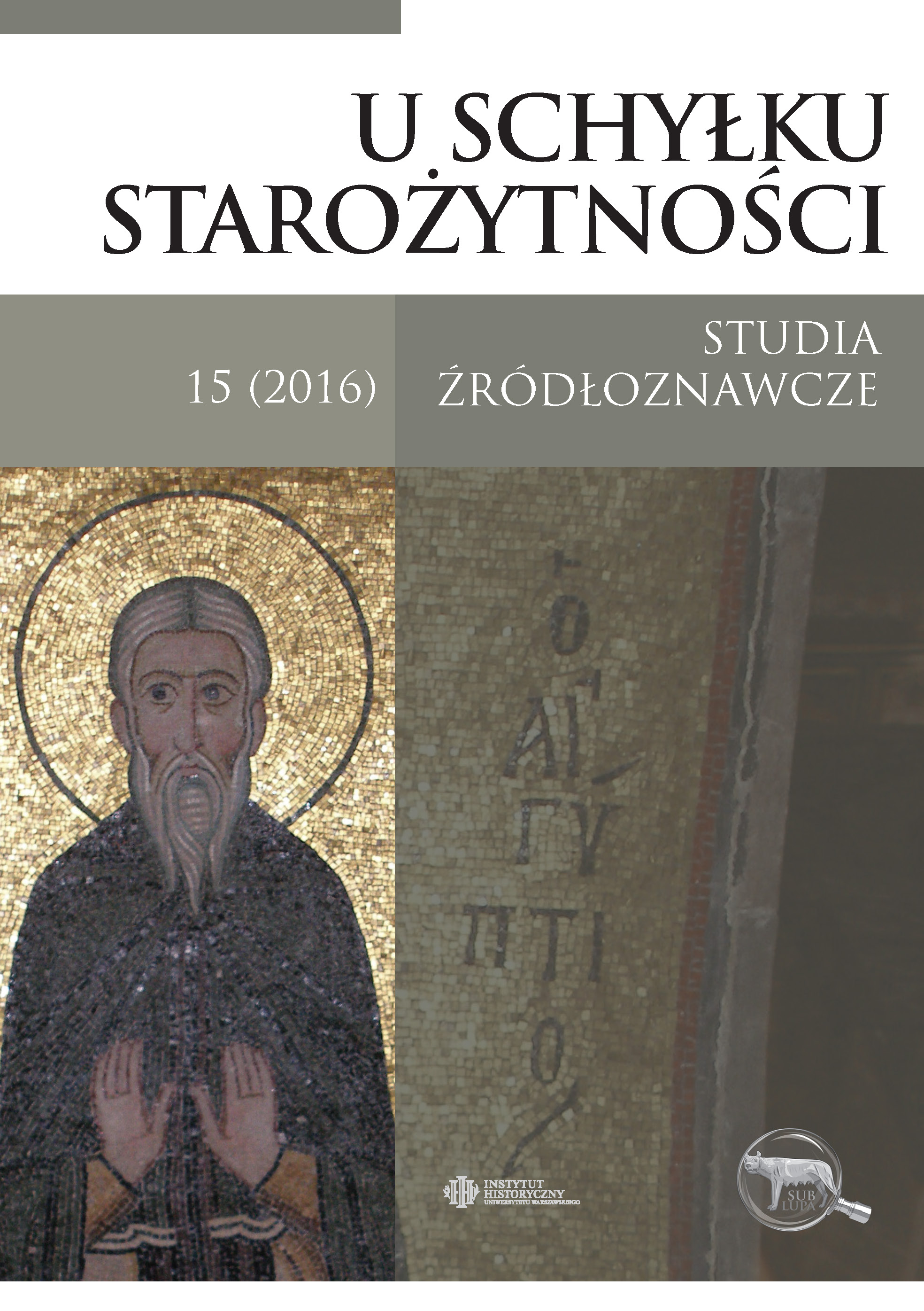Regulacja przeciwko naruszeniu praw dziewczyny przez jej opiekuna – obrona wolności wyboru męża czy odrębny typ zbrodni?
The act against violation of the interests of charges committed by their guardians – protection of the freedom to choose a husband, or a crime in its own right?
Short remarks on CTh 9.8.1 = C. 9.10.1 (318/320/326 AD?)
Author(s): Jacek WiewiorowskiSubject(s): Archaeology, Law, Constitution, Jurisprudence, Ancient World
Published by: Wydawnictwo Naukowe Sub Lupa
Keywords: Constantine the Great; rescriptum; matrimonium; tutor; pupilla; vicarius Italiae; virginity; evolutionary psychology
Summary/Abstract: The text discusses in detail the legal enactment of Constantine the Great, preserved by the Theodosian Code (supplemented by interpretatio in late fifth-century Gaul), and in a more rigid version by the Justinian Code: CTh 9.8.1 = C. 9.10.1; Interpretatio ad CTh 9.8.1. According to the author this cannot be counted among the regulations issued by Constantine I against violation of the interests of charges by their guardians, and neither was its goal to protect the freedom to choose a husband for a girl close to marriageable age. On the contrary, the constitution focused on protecting the premarital chastity of wards and was directed against illicit intercourse between the former tutor and his female ex-ward. The version of the law preserved by the Theodosian Code at first also established the privilege of the ex-tutor to marry the ex-pupilla if her virginity had been left intact by him. The author joins the issue of the CTh 9.8.1 in 318 AD with the suggestio of Bassus, supplementing the opinions that he was the first known vicar of Italy but not Iunius Bassus (praefecus praetorio per Orientem between 318 and 331) and that the date of issue was 320 or 326 AD, as many scholars state. Regarding the possible roots of the enactment, the author rejects any Christian influences. He underlines that the pre-marital chastity of women was always valued by Romans as well as by Mediterranean societies, which has deep evolutionary roots according to evolutionary psychology. He stresses, however, that the understanding of the enactment in the Theodosian Code together with its interpretatio as a crime in its own right (close to the crime of abduction of a woman [raptus] in the light of the version preserved in the Codex Theodosianus) and in the Justinian Code as a stuprum in its own right (close to the crime of raptus), seems to be a sign of Roman moral values in late antiquity changing, probably in accordance with the principles of Christian morality and the personal beliefs of Theodosius II and Justinian I.
Journal: U schyłku starożytności - Studia źródłoznawcze
- Issue Year: 2016
- Issue No: XV
- Page Range: 9-29
- Page Count: 21
- Language: Polish

